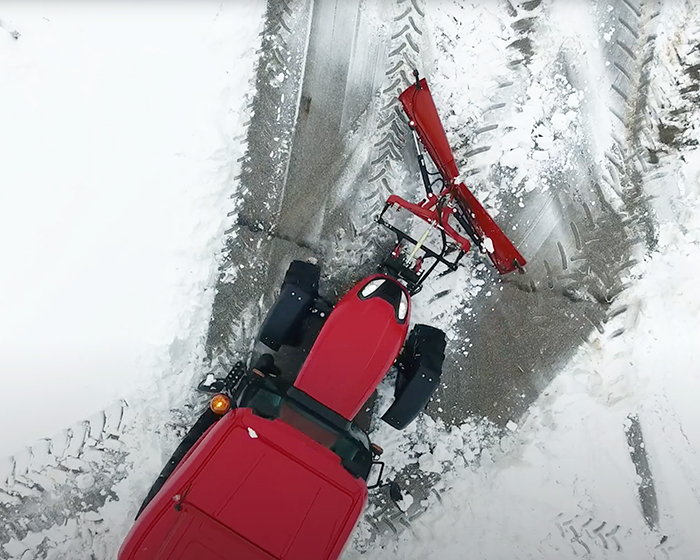
Park in the warmest or sunniest place possible
Perhaps the easiest way to protect your tractor in the winter is to simply park it in a heated garage when temperatures dip. Even if the garage itself is not heated, the layer of protection from the wind chill can help your tractor start and warm up faster when you need it. No space in the shed? There’s a natural solution that might help. If you need to park outside overnight, choose an open, sunny area, preferably facing east. It's a simple, but effective way of letting the rising sun fall on the hood of your tractor at dawn to give the engine a head start in warming up.
Establish a routine that includes time, patience, and maintenance
Can you idle for a few minutes without getting antsy? Those who can spare some time and patience are already on track for a fuss-free winter tractor experience. Operating with cold fluids puts more wear and tear on your tractor. To avoid irreversible damage, allow the engine to warm up for about 5 to 10 minutes prior to use when you start your tractor in the colder months. Tractor parts also benefit from regular checks and extra attention in the winter. Rubber parts, like hoses and belts, are especially susceptible to the cold and require regular inspection. Lastly, check your tires for fine cracks, a telling indicator of dry rot, and fill them to the proper pressure recommended on the sidewall.
Use winter-appropriate fuel and engine oil
Protect your engine with engine coolant and a block heater
Engine coolant keeps your tractor from overheating in summer, but it also protects against freezing in the winter, hence its alternate name, antifreeze. In the winter, specifically, engine coolant helps your engine and tractor start by protecting it against freezing and corrosion while extending water pump life and minimizing liner cavitation. Ready to take engine protection one step further? Add an engine block heater to the mix. An engine block heater is essentially a small heater, powered by an independent energy source, that will warm up the engine block and make the tractor easier to start. By also warming the engine coolant, block heaters play an important supportive role in cold-weather vehicle starts.
Remove the battery if your tractor goes into storage
A little winter TLC goes a long way
As seasons change, routine checks and regular maintenance are some of the most important preventive measures you can take for your tractor’s longevity and productivity. TYM tractors are designed to last a lifetime and beyond, and our website offers detailed instructions and helpful tips on how to get the most out of your tractor throughout all seasons and weather. For more support from TYM, check our website for maintenance options and useful resources like articles covering milestone service checklists and guides for preparing your tractor for rainy season. For maintenance tips and product availability specific to your model and region, get in touch with your local TYM dealer.